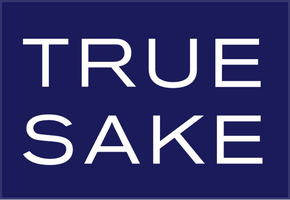
Sake Brewers – 5 Quick Questions for Masao Aisawa from Take no Tsuyu Sake Brewery
We know a lot about sake, but there is so much more to learn. Our goal is to have as many statistics and anecdotes about the breweries that we represent, so we can pass that information on to some of the most highly educated sake souls in the entire sake market.
In an effort to keep up, we wanted to identify a few breweries of note, and reach out to them to get some information about their brewing history and current efforts. And my first outreach was to an old friend of True Sake and SAKE DAY by the name of Masao Aisawa, who is the very active and awesome President of Yamagata Prefecture’s Take no Tsuyu Sake Brewery.

Beau Timken: When did you start exporting to the US? How many cases in the first year? What year did you export the most sake to the US? What were the first sakes you exported? How many Brands are available today? What % of your total sales are international? And what % is to the US?
Masao Aisawa: "First of Jizake" 1995 MTC President Noritoshi Kanai visited a sake brewery and began exporting Jizake to the United States. After searching around for a hand-crafted sake brewery that only uses locally grown rice from Japan's traditional regions, which are highly suitable for brewing, he came across Takeno Tsuyu Sake Brewery. For the seven years from the first year to 2001, we were on a parallel track with exports of 500 sho per year. However, on September 11th, Junmai Takeno Tsuyu also failed at the [World Trade Center], and in the 10 years from 2011 to 2021, exports increased 10 times. Around that time, many sake breweries began exporting sake to the United States. 2020 was the year in which the most sake was exported to the United States. It was equivalent to 10,000 bottles. The first sake we exported was Junmai Takeno Tsuyu. There are currently 12 brand items available in the US. 100% rice grown in Iwashimizu. Water from the dam does not enter. The natural weak alkaline sterile high hydrogen silica wave ultra-soft water that we discovered in 2002 is also the only raw water in Japan that can be sold to the United States. Overseas sales account for 20% of total sales. And sales to the US is 10%.
Beau: How many people work at your brewery? Full time? How much sake are you making this year? Is it more than last year? What product do you sell the most of?
Masao: 23 people work at the Takeno Tsuyu brewery. There are 12 full-time employees and 11 only in the winter. This year, we will make 161.3 koku of Junmai Daiginjo, 18.6 koku of Daiginjo, 157.7 koku of Junmai Ginjo, 38.0 koku of Junmai, 56.6 koku of HonJozo, and 131.2 koku of FutsuShu, totaling 563 koku of sake. It's a little more than last year. Junmai Daiginjo is the best seller. [*Editor's Note: 1 koku = 47.65 gallons]

Beau: Who designs your labels? What do you think is your most popular label? Is packaging important to you? What label did you want to make but never did?
Masao: All the labels distributed in the United States are designed by me. The most popular label is Hakuro Suishu Junmai Ginjo. Packing is important to me. I wanted to make it, but there is no label that I couldn't make.
Beau: What are some sake and food pairings that you've learned over the years from your international markets - American food, French and Chinese pairings? Do you have any favorites?
Masao: The combinations of sake and food that I have learned from international markets over the years, that is, the combinations of American food that go best with sake are 1) dishes served with caviar, 2) dishes paired with avocado, and 3) dishes paired with foie gras. (4) vegetable salad mixed with a wide variety of cheeses, (5) dishes with capers and olives, and dishes with cream cheese. For French cuisine, it would be escargot, and for Chinese cuisine, it would be dishes with pitan (century egg) or dim sum dishes.
Beau: Can customers of True Sake visit your brewery? What is the best time of year to visit? Do you like visitors?
Masao: True Sake customers can visit my brewery. The best time to visit during the year is winter for sake breweries, summer for paddy fields, spring for wild vegetable seafood dishes, and autumn for mushroom seafood dishes. I like visitors.
Masao Aisawa
President
Managing Director, Production
Takeno Tsuyu Sakagura Co., Ltd.
The Tsuruoka Sake Brewing Cooperative Touseijo is operated by a total of 7 people, 1 year-round employee and 6 winter employees. This rice mill boasts the world's highest level of precision, turning 100 million grains of brown rice into 100 million grains of white rice. I am currently the chairman of the board.
